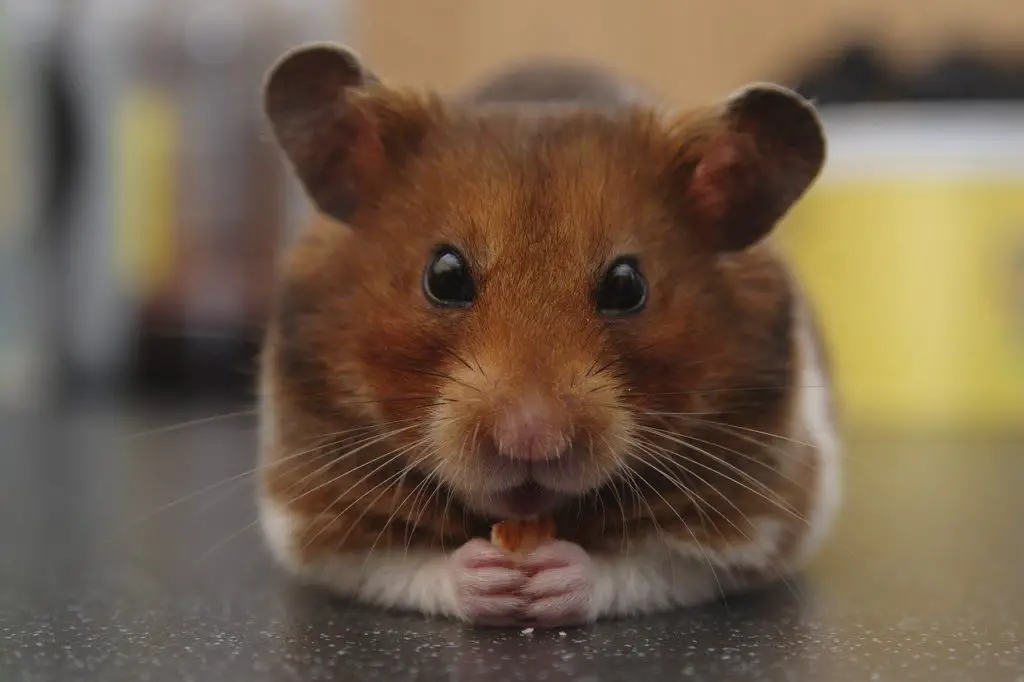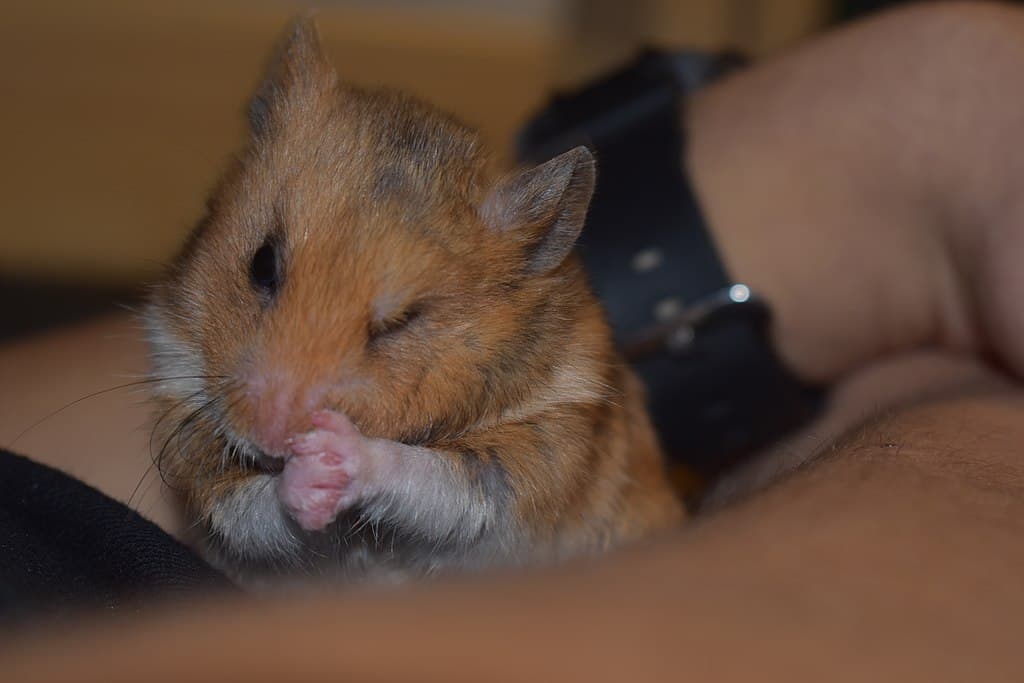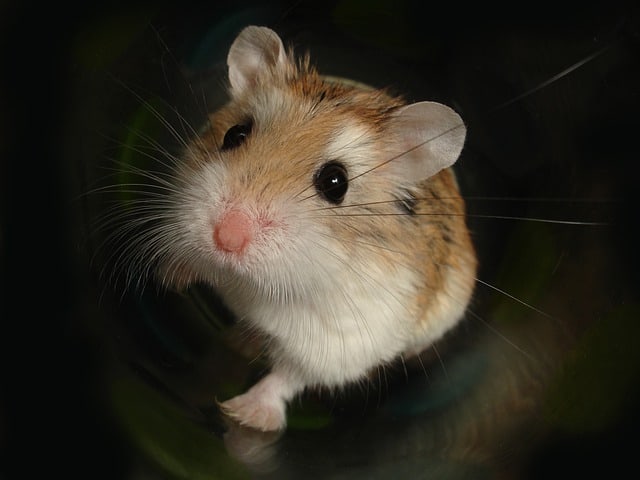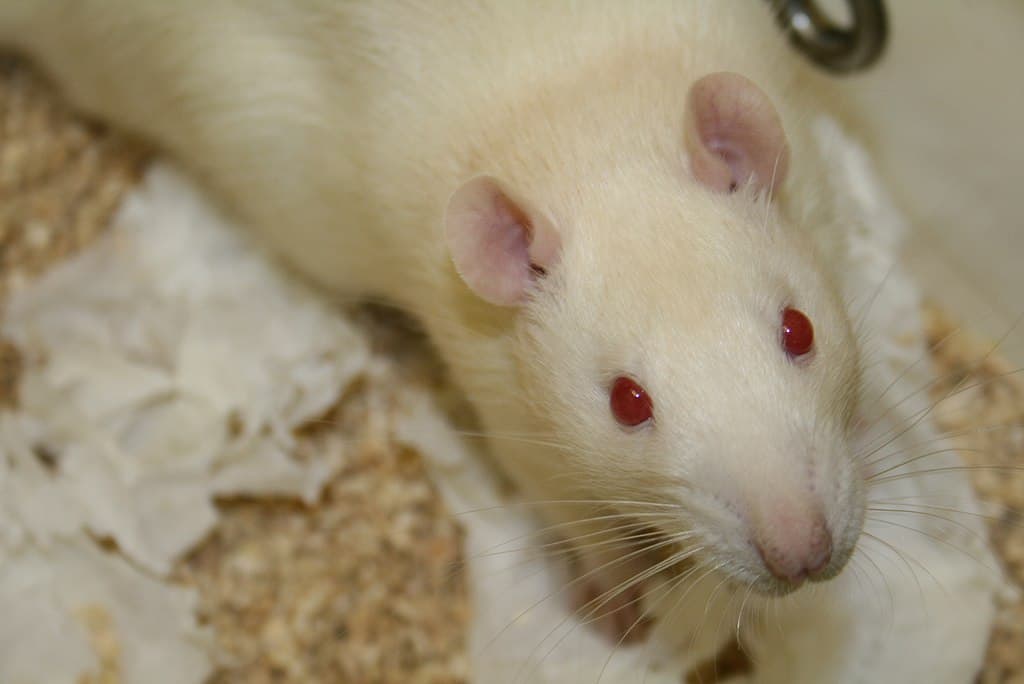Hamsters are adorable little creatures that have stolen the hearts of millions of people. Their adorable furry body combined with their beady little eyes are sure to make anyone that sees them fall in love with them.
However, the eyes of the hamster serve much more purpose than just making them look extra cute. If you have questions about your hamster’s eyes or simply want to know more about them, you’ve come to the right place. In this article, we’re putting your hamster’s eyes under the microscope by taking a look at the top x most interesting facts about them. Let’s get into it!
1. Hamsters have horrible eyesight 👓

Hamsters are not blind, but their eyesight is pretty terrible. They can see almost nothing, only having vision of a few inches past their nose. Especially things that are right in front of them are difficult for them to see because their eyes are on the sides of their head.
The reason why their eyeballs are located on the side of their head rather than on the front is that they’re prey animals. Having their eyes located there makes it possible for them to see predators that are trying to sneak up behind them. The tradeoff, however, is that they can barely see anything that’s happening right in front of them. You might’ve noticed this when your hamster suddenly seems to get scared, even though you’ve been standing right in front of it for a while. They simply didn’t see you before!
On top of having horrible vision, hamsters are also colorblind.
However, while hamsters have poor vision, they are quite capable of seeing in the dark. The reason for this is that they have a lot of rod cells in their eyes which allow them to see quite well in low-light conditions.
2. Hamsters have eyelids

Hamsters have one set of eyelids that is used to clean their eyeballs. You might not be able to see them, but they’re definitely there. If you’d like to see them, try sneaking up on your furry friend while he’s sleeping. Be careful that you don’t disturb and wake him up though because that’s not nice for them and can result in a loud scream.
Because of the fact that hamsters do indeed have eyelids, they are also capable of blinking.
3. They can hibernate with their eyes open
Many people don’t know it, but hamsters can indeed go into a state of hibernation. They only do this when there’s a lack of food or if they’re very cold. So, this is not something that should happen to a hamster in captivity since they always have access to plenty of food and hopefully a warm temperature.
However, if it does happen, it can be quite scary for hamster owners because they often mistake hibernation for their hamsters for being dead, especially because hamsters can hibernate with their eyes open. This can make it look like they’re dead.
4. Hamsters technically do not have eyebrows

Hamsters do not have eyebrows like you and I have them. The reason of course is that their entire face is covered with hair, making it impossible for them to have eyebrows.
Roborovski hamsters, however, do have something that looks like white eyebrows. They’re not actually eyebrows, but they are a patch of white-colored hair above their eyes that look similar to eyebrows. These “eyebrows” give Robo hamsters a very unique and adorable face.
5. Hamsters have eyelashes
Many people are surprised when they hear this, but hamsters do indeed have eyelashes, and very beautiful ones at that. They might be a little hard to spot, but they’re definitely there. Your hamster has eyelashes because they’re the first line of defense for their eyes; keeping airborne dirt, dust, lint, and other debris from reaching their eye tissue.
6. Sometimes hamsters eyes are bulging

Like most other creatures, the eyes of the hamster are very vulnerable. Not only are they very soft and squishy, but they’re also quite susceptible to disease and trauma.
One thing that often affects hamsters is Exophtlalmos, which is a fancy name for the bulging of the eyeballs. According to PetMD, this is typically caused by an infection of the eye or trauma. However, it can also occur if you grab your hamster too tightly.
If your hamster’s eyes are bulging out, you have to take them to a veterinarian immediately so that they can try to save your hamster’s eyes. If the condition worsens it can result in the eyeballs having to be removed.
Hamsters are also vulnerable to other eye problems such as pink eye and ulcers. The best way to prevent these is to handle them carefully, keep their cage clean, and take good care of their teeth.
7. Hamster eyes can be a variety of different colors

Most hamsters have black eyes, and this is by far the most common color. The reason why most hamsters have black eyes is genetic. Their parents have black eyes, which is a dominant gene, so their offspring have them too.
However, sometimes hamsters have different colored eyes. There are a total of 6 different eye colors that hamsters can have:
- Black. The most common color, almost all hamsters have black eyes. This is the only eye color that Chinese hamsters can have.
- Black with red tint. Very similar to black, but with a tint of red when viewed under direct light. Becomes more visible as the hamster gets older.
- Blue. Blue-eyed hamster still have mostly black eyes, but they have a blue right around them. Most common in Winter White and Campbell’s hamsters.
- Red. Red eyes are most often seen in white hamsters.
- Ruby. Very similar to red, but darker at birth.
- Heterochromia. Heterochromia is two different colored eyes, often red and black. It’s the result of a spontaneous genetic mutation and is not something to be worried about. This color occur in all hamster breeds but is more common in Syrian hamster.
8. Hamsters are born blind
Like many rodents, baby hamsters are born completely blind. They open their eyelids about 2 weeks after being born. However, while many animals develop quite a strong sight as they grow up, hamsters never do.
The reason why hamsters never develop strong sight is that they’re most active in the dark, so they rely much more on their nose than on their eyes to help them get around in the world!
- How Long Do American Eskimo Dogs Live? Important Factors and Care Tips - September 29, 2023
- Do American Bulldogs Need Grooming? Essential Tips and Care Guidelines - September 29, 2023
- Do Bengal Cats Enjoy Playing? Essential Tips for Keeping Them Active - September 29, 2023